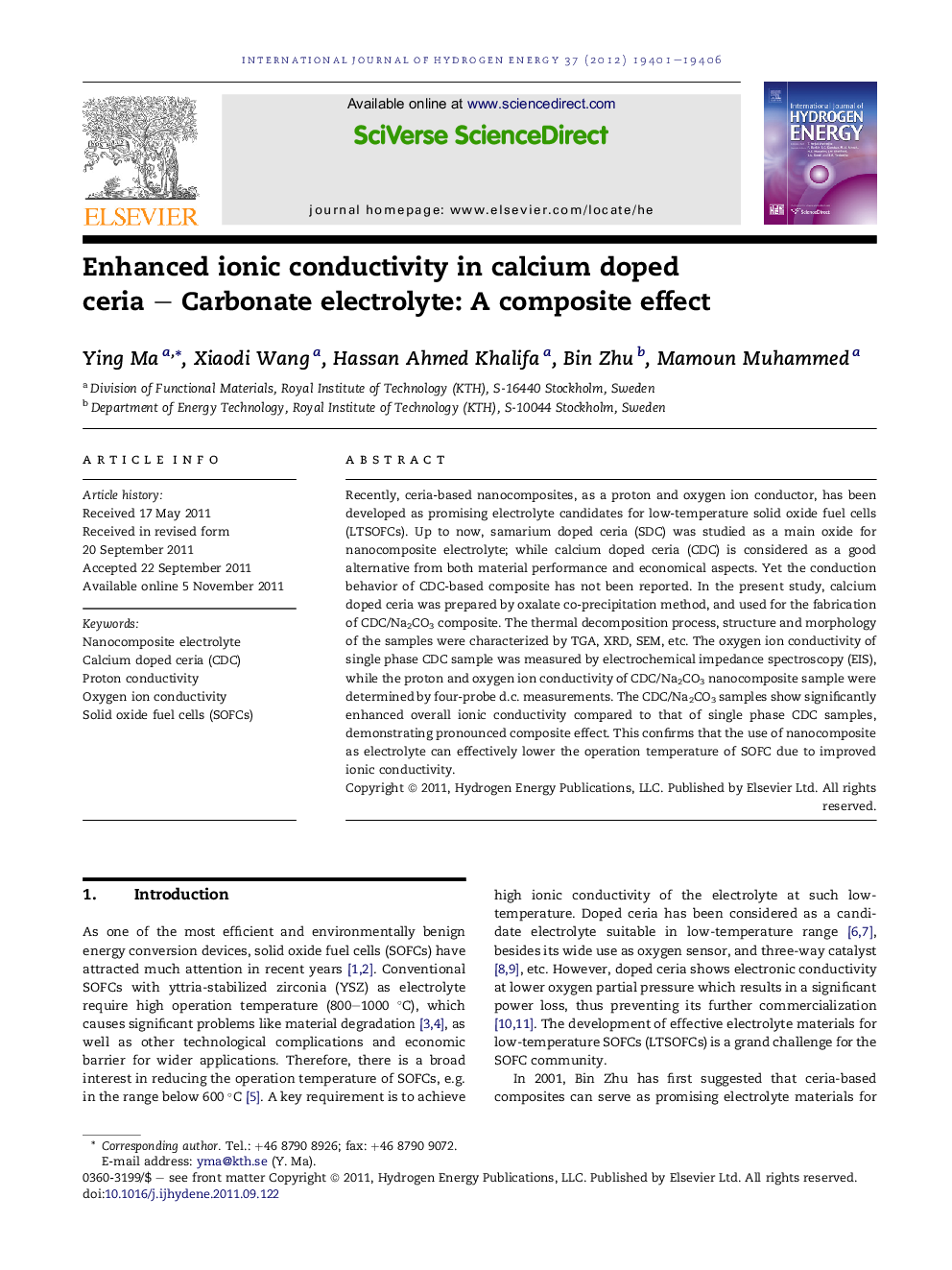| Article ID | Journal | Published Year | Pages | File Type |
|---|---|---|---|---|
| 1276154 | International Journal of Hydrogen Energy | 2012 | 6 Pages |
Recently, ceria-based nanocomposites, as a proton and oxygen ion conductor, has been developed as promising electrolyte candidates for low-temperature solid oxide fuel cells (LTSOFCs). Up to now, samarium doped ceria (SDC) was studied as a main oxide for nanocomposite electrolyte; while calcium doped ceria (CDC) is considered as a good alternative from both material performance and economical aspects. Yet the conduction behavior of CDC-based composite has not been reported. In the present study, calcium doped ceria was prepared by oxalate co-precipitation method, and used for the fabrication of CDC/Na2CO3 composite. The thermal decomposition process, structure and morphology of the samples were characterized by TGA, XRD, SEM, etc. The oxygen ion conductivity of single phase CDC sample was measured by electrochemical impedance spectroscopy (EIS), while the proton and oxygen ion conductivity of CDC/Na2CO3 nanocomposite sample were determined by four-probe d.c. measurements. The CDC/Na2CO3 samples show significantly enhanced overall ionic conductivity compared to that of single phase CDC samples, demonstrating pronounced composite effect. This confirms that the use of nanocomposite as electrolyte can effectively lower the operation temperature of SOFC due to improved ionic conductivity.
